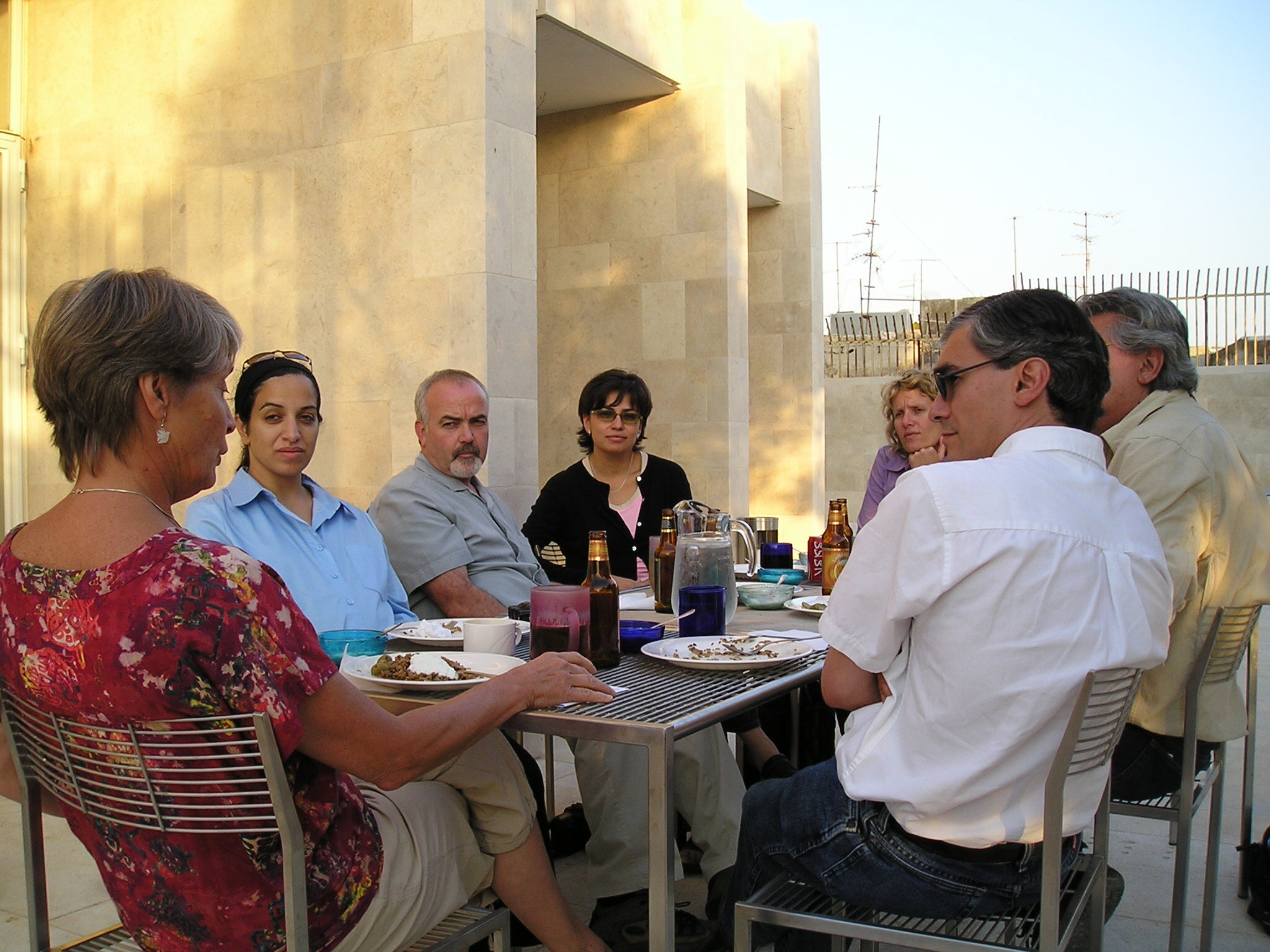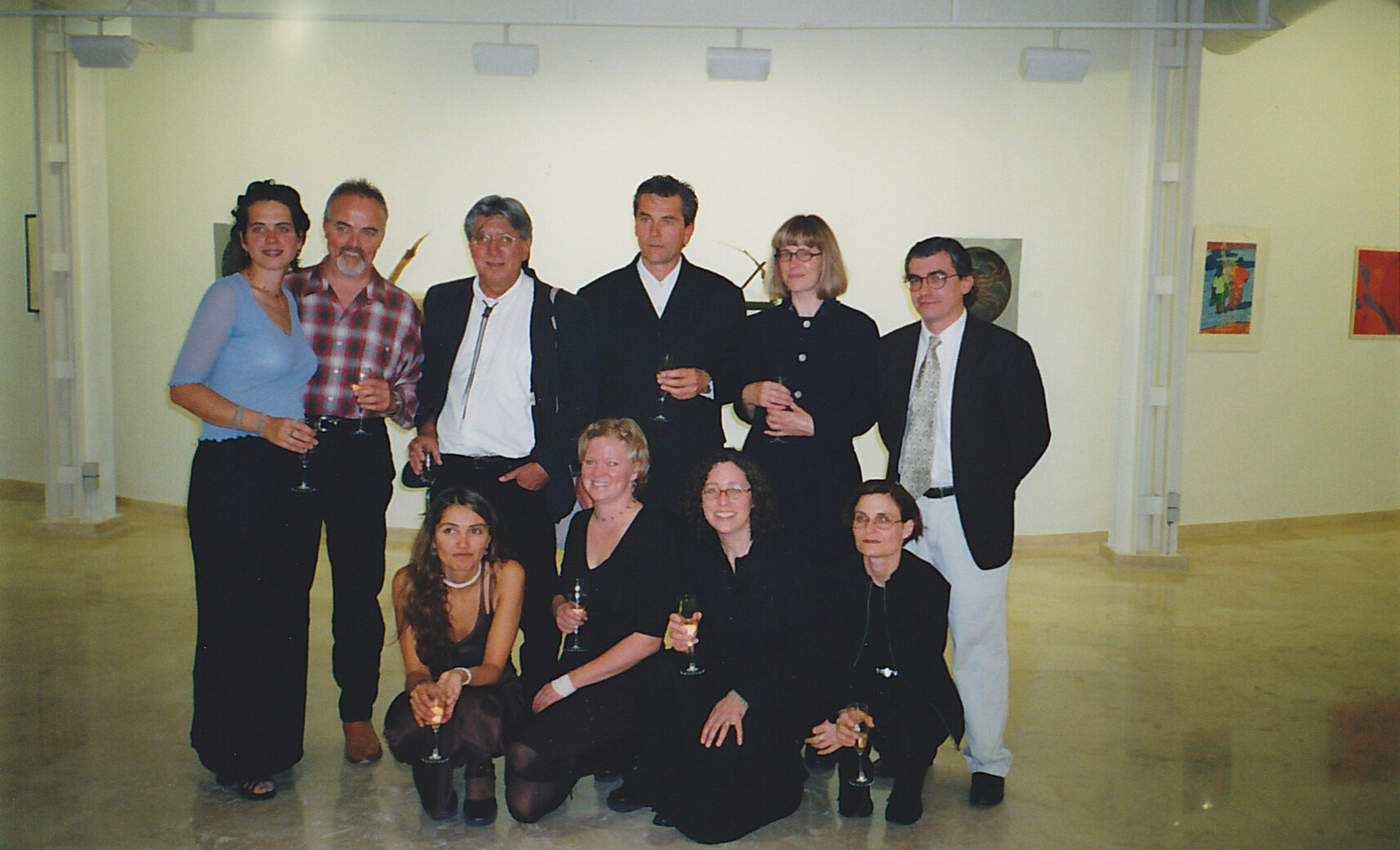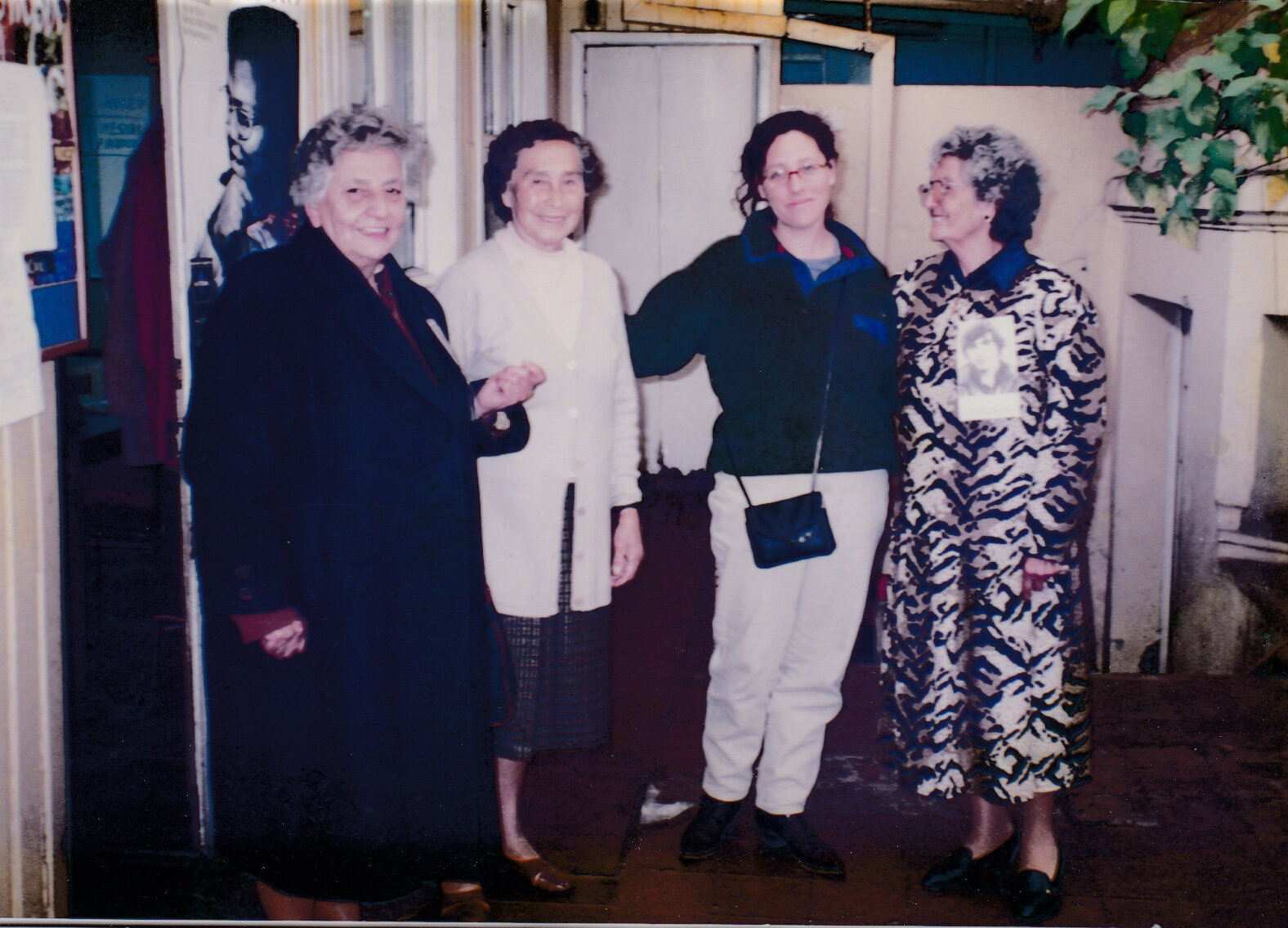“The ARTNAUTS Collective has had exhibitions in places of contention throughout the world. We are now exhibiting in our home country because the United States has become a place of contention. The coronavirus and the present situation in race relations makes it imperative for the ARTNAUTS to exhibit work that helps us address these issues.” Dr. George Rivera
The work of the collective is rooted in an engaged practice that draws from Joseph Beuys’ construct of “social sculpture,” Paulo Freire’s “conscientization” and Nina Felshin’s definition of “activist art” and has worked at the intersection of critical consciousness and contemporary artistic practice to impact change for over two decades. Art as a form of social commentary has existed since Greek civilization. Since that time, the arts have been employed as tools for shedding light on social injustice and the human condition. Historically, this type of art has existed in both museum and gallery settings, as well as in the public domain. However, before the 1960s in the United States, much of the social and political commentary artwork was found almost exclusively in museums and galleries. The conceptual and earth art movements of the 1960s moved art out of museums and into the streets and land. The act of moving art from high art world venues into the “real” world impacted the political art movement of the 1970s and laid the foundation for the ecological art movement. The feminist art movement from this period turned “the personal is political” into visual images that broke the silence around issues facing women and fueled the fires of political art in general. The 1980s ushered in the ecological and activist art movements. These movements represented a major paradigm shift from the Modernist social disconnection and alienation of the artist to a connection between the artist and community (Gablik, 1991). They offered a new possibility for art and the artist—a supportive and collaborative effort between artist and society which was thought to ultimately lead to social change (Becker, 1994). The ecological art movement inextricably links art to the context within which it is created—the community and environment. The ecological aesthetic redirects the focus onto issues of context and social responsibility, as does the aesthetic of the activist art movement.
Activist art has three guiding characteristics. It must have political content, it must be created or displayed in public, and it must create some interchange or interaction with the public (Felshin, 1995). In this case, the role of art is based on interaction, is context-dependent, and is anti- hegemonic in that it allows for a broader definition of who may be an artist and what constitutes art.
The Artnauts collective has employed elements of each of the aforementioned paradigms. The group has projected images on the sides of buildings to draw attention to global warming, has created collaborative exchanges between artists across national divides and has exhibited political work in museum and gallery spaces ranging from the National Museum of Chile to the XYZ Gallery in Beijing to the DMZ in South Korea and is an important example of a collective working within the “art as action” paradigm.
ARTNAUTS FOUNDERS
“In the face of so much environmental, social, and economic cataclysm, I have nothing but admiration and respect for those artists who continue in their efforts to make art as if the world, and the earth, matter. Sisyphean heroes, they have not given up on our future…”
Suzi Gablik (2012), Artnauts exhibition essay, The Ecological Imperative, Museo de Arte Contemporaneo, Valdivia, Chile
The ideals that Suzi Gablik so eloquently articulates have guided the Artnauts since their inception in 1996, when Dr. George Rivera founded the artist collective. The group, started by Rivera (Professor of Integrated Arts, Department of Art and Art History, University of Colorado-Boulder) included four founding members: Garrison Roots (Deceased, Professor of Sculpture and Department Chair, Department of Art and Art History, University of Colorado-Boulder), Luis Valdovino (Professor of Video, Department of Art and Art History, University of Colorado-Boulder), Dennis Dalton (Professor of Art, Colorado State University-Pueblo), and Dr. Beth Krensky (Associate Professor of Art Teaching, Department of Art and Art History, University of Utah).
Dr. Rivera moved from the University of Colorado-Boulder Sociology Department to join the Department of Art and Art History in 1995. As a sociologist with a particular focus on race relations, George Rivera had a social consciousness that he wanted to bring to bear on the arts. He did so both as an activist artist and curator. Influenced by the Young British Artist model of curating oneself into exhibitions, Rivera decided to use this practice with the Artnauts. Although widely accepted in the art world today as a legitimate and important mode of curating, his curatorial practice was a fairly new phenomenon in 1996 and helped expand the boundaries of the prevailing guidelines for artist curators.
Rivera started the collective to address pressing issues in places of contention. According to Rivera, the Artnauts was one of the first U.S. artist collectives to go global. The group would go to places of historical or contemporary contention around the globe and use their work as a way to create dialogue with artists, critics and audiences in various international venues. The members of the group would step outside their own society and use themselves and their art to bear witness to the pressing issues of our time.
Dr. Rivera named the group “Artnauts” for two reasons. First, he was making a statement that this was not (naut) art as usual. The group was taking an activist stance. Second, like astronauts circling the globe, the group was venturing into unknown, or at least not well known, territory. Rivera’s decisions about where to exhibit work were based on where important issues were unfolding or had happened. For instance, the Artnauts exhibited at the Museo Nacional de Bellas Artes in Santiago, Chile in 1998 after Pinochet had been extradited to Spain. The group then exhibited in Spain that same year to continue the dialogue. The Artnauts were the first U.S. to exhibit in Khabarovsk , Russia. The exhibition, Borderlands, took place at the Khabarovsk Academy of Art. The collective has been the first to exhibit in numerous international locations including in Palestinian Territories and to remote locations along the Amazon River in the Colombian Amazon. In 2018, the Artnauts exhibited at the DMZ Museum, South Korea addressing issues about the border in an exhibition called Liminal Space.
Throughout the collective’s history, well-known artists, such as Judith Baca, Luis Jimenez and Richard Serra have participated in exhibitions because of the focus on social change. Art critics Lucy Lippard and Suzi Gablik also became interested in the conceptual grounding of the group and have written essays for numerous catalogs and continue to be very supportive of the group’s mission.
The four founding members were committed to helping Dr. Rivera start the collective for numerous reasons. All were serious, professional artists interested in the role of art to address socio-political issues and each had a relationship with Dr. Rivera. Following is a brief description of each of the four founding members. All continue to be active members of the Artnauts, except for Garrison Roots who passed away in 2011.
Dennis Dalton, a Professor of Art at Colorado State University-Pueblo, met George Rivera in 1992. At the time, Dalton was curating for the Sangre De Cristo Art Center and had met Denver-based artist, Tony Ortega, who had worked closely with Rivera and introduced the two curators. Dalton and Rivera became good friends and collaborated on numerous art exhibitions at the Colorado State University Art Gallery that Dalton directed. Dalton exhibited shows at CSU that Rivera had curated, including a solo exhibition for Mexican artist, Nahum Zenil, and a CSU/ CU-Boulder joint exchange with artists from Beijing. During the early years of the collective, Dalton served as the group’s installer and travelled to exhibitions in Chile, Spain and Mexico. Dennis considers George a valued friend and continues to be a very important member of the Artnauts.
Dr. Beth Krensky met George Rivera while she was a doctoral student at the University of Colorado. She was getting her Ph.D. in Education with a focus on art as a tool for individual and community transformation. Her research in art and social change aligned with George’s interests. This led her to study and work together with him for the duration of her time at CU-Boulder. She travelled with the Artnauts to early exhibitions in Chile, Spain and Mexico and continues to be an involved member of the collective. She attributes much of her impact as an artist to George’s influence and the two have had a long history together as artist/scholars who commit themselves to art as a form of action. She is currently a Professor in the Department of Art and Art History at the University of Utah.
Garrison Roots was a very important member of the collective. In addition to being a well-known sculptor who had created public art pieces and installations in major U.S. and international venues, Garrison was a Professor of Sculpture and later became the Chair of the Department of Art and Art History at CU-Boulder. He and George became close friends shortly after Rivera joined the faculty and continued to have a life-long relationship. Roots would travel with the collective to most exhibitions and played an important role in assisting Rivera throughout the duration of his time as an Artnaut. At the end of his life, he told George Rivera that being part of the Artnauts was the most important thing he ever did as an artist. He had a larger-than-life presence that helped shape the collective over the years.
Luis Valdovino is currently a Professor of Video in the Department of Art and Art History at CU-Boulder. He joined the Artnauts at the same time as Garrison Roots did. Luis Valdovino accompanied Garrison and George to many Artnauts’ exhibitons and continues to be a member of the collective.
The Artnauts has had a long and illustrious history. Over 350 artists have been members of the group during the past 25 years and we have had over 270 exhibitions on 5 continents. The collective will be cerebrating its 25th year together in fall 2021 with an exhibition at Seidel City in Boulder Colorado. And, due in part to the collective’s success and longevity, Dr. Rivera’s life work and art is being archived at the prestigious Nettie Lee Benson Latin American Collection at the University of Texas-Austin. The archive has a dedicated section to the history of the Artnauts with hundreds of works from participating artists who donated their work over the years.
We are looking forward to many more years of art-orbiting the globe and creating dialogue about important and pressing issues.
The collective has non-profit status through Redline Contemporary Art Space, Denver Colorado and continued support through the University of Colorado Boulder.
Bibliography:
Becker, C. (1994). The subversive imagination: Artists, society, & social responsibility. New York: Routledge.
Felshin, N. (Ed.) (1995). But is it art?: The spirit of art as activism. Seattle: Bay Press. Freire, P. (1970, 1993). Pedagogoy of the oppressed. New York: Continuum.
Gablik, S. (1991). The reenchantment of art. New York: Thames and Hudson.





